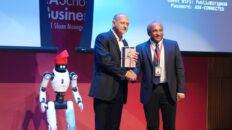The latest Cisco AI Readiness Index 2025 has revealed that organisations best prepared for the AI era, known as ‘Pacesetters’, are achieving up to four times more success in turning AI pilots into production and are 40% more likely to report measurable business value than their peers.
In Malaysia, only 16% of organisations qualify as Pacesetters, compared to 13% globally, highlighting a small but consistent group leading the region in AI adoption, scalability, and value creation.
The study surveyed 8,000 senior business and IT leaders across 30 markets and 26 industries, identifying the strategies that separate high-performing AI adopters from those lagging behind.
“This year’s Cisco AI Readiness Index makes one thing clear: readiness leads to value,” said Chee Kheong Lee, Managing Director of Cisco Malaysia. “AI-ready organisations — the Pacesetters in our research — are four times more likely to move pilots into production and 40% more likely to realise measurable outcomes. Their success depends on readiness, discipline, and decisive action.”
The Rise of the Pacesetters: Readiness as a Competitive Advantage
According to Cisco’s findings, Pacesetters distinguish themselves through a disciplined, system-level approach that aligns data, infrastructure, and governance to power long-term AI success.
Key characteristics of Pacesetters include:
- Defined AI strategies: 99% have a clear AI roadmap (vs 64% in Malaysia) and 91% have a structured change management plan (vs 38%).
- Focused investment: 79% make AI their top investment priority (vs 26%) with 96% having both short- and long-term funding strategies.
- Scalable infrastructure: 71% have flexible, instantly scalable networks (vs 18% in Malaysia), and 77% plan to expand data centre capacity within a year.
- Measurable performance: 95% track the impact of AI investments, while 71% expect new revenue streams from AI — double the local average.
- Integrated security: 62% have embedded AI into security systems (vs 36%), and 75% are fully prepared to manage and secure AI agents.
As a result, 90% of Pacesetters report gains in profitability, productivity, and innovation, compared with 65% of Malaysian organisations overall.
AI Agents: Ambition Outpacing Infrastructure
The report shows a surge in agentic AI adoption, with 90% of Malaysian organisations planning to deploy AI agents and over a third expecting them to work alongside employees within the next year.
However, Cisco warns that many lack the secure infrastructure needed to support this growth. Only 18% of organisations describe their networks as flexible or adaptable, while 32% admit their systems cannot scale for rising data complexity.
Pacesetters, by contrast, have already laid the robust digital foundations necessary to deploy AI agents safely and effectively at scale.
AI Infrastructure Debt: A Hidden Risk to Long-Term Value
The report also introduces the concept of AI Infrastructure Debt such as the gradual accumulation of technical compromises, outdated architecture, and deferred upgrades that erode an organisation’s ability to generate sustained AI value.
According to the study:
- 36% expect workloads to increase by more than 30% within three years.
- 60% struggle to centralise data effectively.
- Only 28% have adequate GPU capacity.
- Fewer than one in three can detect or prevent AI-specific cyber threats.
Cisco warns that without stronger governance, cybersecurity, and data centralisation, this “infrastructure debt” could limit scalability and increase operational risk, particularly as organisations deploy autonomous and agentic AI systems.
Bridging the Gap Between Ambition and Readiness
As AI becomes integral to modern business operations, Cisco’s research underscores that value follows readiness. The organisations achieving the most success are those taking a holistic approach — investing not only in AI tools, but in the network, data, and governance foundations that sustain long-term innovation.









